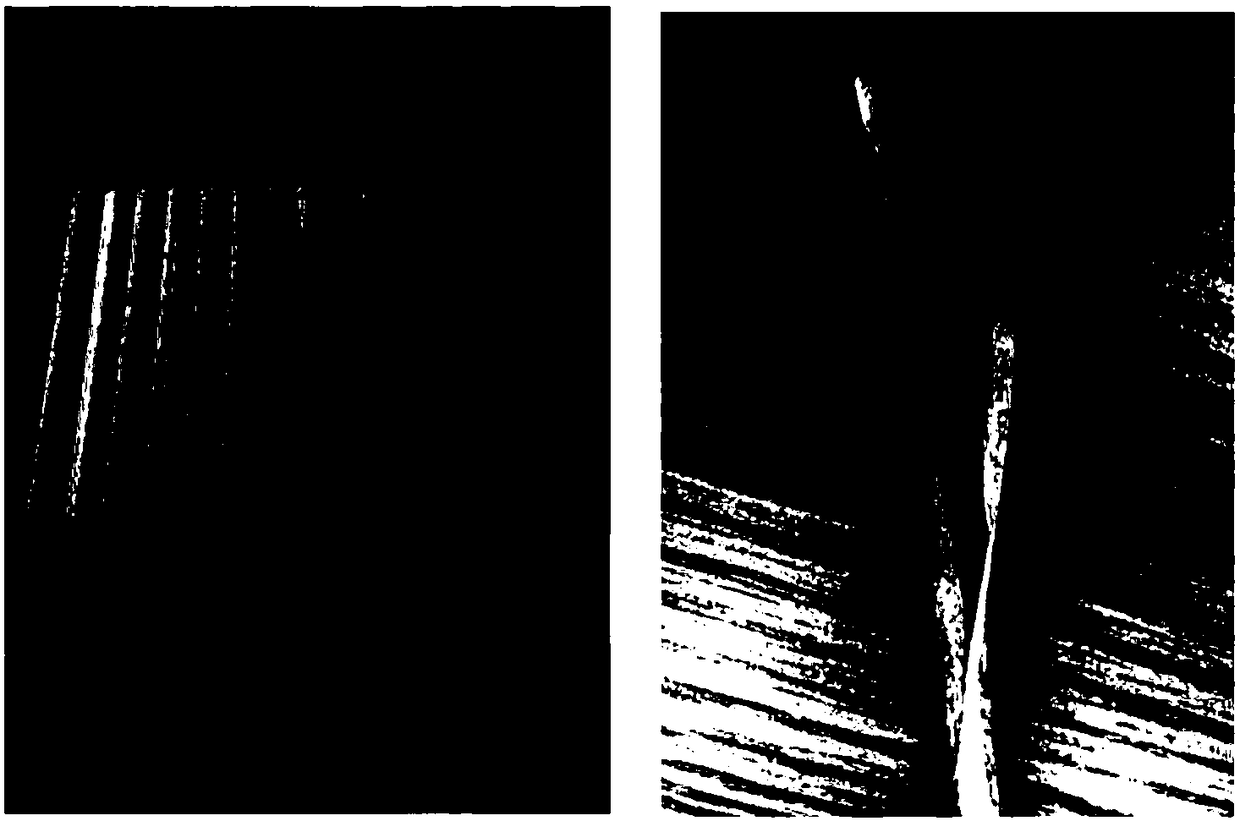Tobacco shredding technique
A technology for cutting shreds and tobacco leaves, which is used in tobacco, tobacco processing, and paper cigarette manufacturing. Effect
- Summary
- Abstract
- Description
- Claims
- Application Information
AI Technical Summary
Problems solved by technology
Method used
Image
Examples
Embodiment 1
[0031] Example 1 A processing technology of a single rod of heat-not-burn cigarette core material using dry-process reconstituted tobacco leaves cut into strips
[0032] Combining the characteristics of dry-process reconstituted tobacco leaves and the physical performance requirements of the material processed by the molding process, a strip-cutting process was developed.
[0033] 1. Specific methods
[0034] (1) Place the reconstituted tobacco leaves with a moisture content of 8 to 12% on the unwinding reel, and adjust the radial gap between the cutter roller and the bottom roller through the lifting mechanism to control the depth of the cut. When the dry reconstituted tobacco leaves pass through the cutter roller and the bottom roller When there is a radial gap, the dry-process reconstituted tobacco leaves are sliced and shredded into a state of half-broken horizontally and continuous vertically.
[0035] (2) Roll into a reel by the winding mechanism, and carry out the si...
Embodiment 2
[0038] Example 2 Detection of Physical Indexes of a Single Rod of Heat-Not-Burn Cigarette Core Material Using Strips and Shredded Dry Process Reconstituted Tobacco Leaf
[0039] 1. Detect the physical indicators of the core material single rod prepared in Example 1.
[0040] 2. Results
[0041] The physical indicators and data statistics of the dry-process reconstituted tobacco leaf core materials of 30 samples are shown in Table 1 and Table 2. The dry-process reconstituted tobacco leaf products after the slitting and shredding process can better meet the processing requirements of the molding process, and the resulting Although the physical index of the core material is compared with the physical index of the core material made of dry reconstituted tobacco leaves by the traditional process, the fluctuation of the suction resistance is slightly larger, while the single rod weight and the circular fluctuation are relatively smaller, and the overall condition is good and in line...
Embodiment 3
[0047] Example 3 Sensory Quality Evaluation of Heat-Not-Burn Cigarettes Using Dry Process Reconstituted Tobacco Leaf Slit and Shredded
[0048] 1. Specific operation
[0049] Composite the formed core material with the Philip Morris HNB product filter in Example 1 to form a complete HNB cigarette, and evaluate the sensory quality.
[0050] 2. Results
[0051] Table 3 Evaluation of sensory quality of dry reconstituted tobacco leaf core material after the improved molding process:
[0052]
[0053] From the sensory quality evaluation results in Table 3, it can be found that the heat-not-burn cigarettes processed by the core material of dry reconstituted tobacco leaves processed by the stripping and shredding process, with the help of Philip Morris smoking sets and filters, the smoke concentration of the sample is relatively low. High, strong aroma, less miscellaneous gas, better moisturization, slightly sweet taste, better overall sensory quality, the number of puffs reache...
PUM
| Property | Measurement | Unit |
|---|---|---|
| Length | aaaaa | aaaaa |
| Length | aaaaa | aaaaa |
| Length | aaaaa | aaaaa |
Abstract
Description
Claims
Application Information
 Login to View More
Login to View More - R&D
- Intellectual Property
- Life Sciences
- Materials
- Tech Scout
- Unparalleled Data Quality
- Higher Quality Content
- 60% Fewer Hallucinations
Browse by: Latest US Patents, China's latest patents, Technical Efficacy Thesaurus, Application Domain, Technology Topic, Popular Technical Reports.
© 2025 PatSnap. All rights reserved.Legal|Privacy policy|Modern Slavery Act Transparency Statement|Sitemap|About US| Contact US: help@patsnap.com



